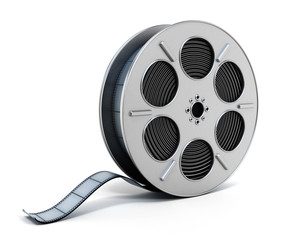It is always tragic when a beloved actor or actress passes away. We have to accept that an iconic character of theirs will never properly return to media. Or at least, we had to accept that fact. Now, given the wonders of technology, we can once again see the return of those long gone. But is that truly a sight for sore eyes, or is it something less?
*WARNING: MINOR SPOILERS FOR ROGUE ONE WILL ENSUE*
In the movie Rogue One: A Star Wars Story that came out only a month ago, we were greeted to the return of a familiar face: the nefarious Grand Moff Tarkin, who was last seen played by the late Peter Cushing in 1977’s Star Wars. And when Tarkin finally turns around and we see his face for the first time, it actually is Peter Cushing’s face. How, if he had passed away in 1994? Well, Tarkin himself was actually played by English actor Guy Henry, who is well known for his role as Pius Thicknesse in the Deathly Hallows two-parter. Cushing’s face and likeness was then superimposed onto Henry. The ILM team (Industrial Light & Magic) searched through hours of footage to find suitable material of Cushing to build from, but footage from A New Hope was lit very differently to the lighting used in Rogue One and had to be digitally changed. The more they manipulated the lighting to match the other actors in the scenes, the less like Cushing the character model looked, which meant creating a balancing act between “a digital figure” and “one who looked precisely like Cushing”. The owners of Cushing’s estate were heavily involved with the creation and had input right down to “small, subtle adjustments”. The result, which has been called “one of the most complex and costly CGI re-creations ever”, received a mixed response, with questions being raised about the morality of using a dead actor’s likeness. The ethical and moral debate about the usage of a dead actor’s likeness has gone on for a while. The late Robin Williams specifically stated in his will that nobody could use his likeness for any reason until 25 years after his death. And now, with the recent passing of Carrie Fisher (who is well known as the Star Wars character Princess Leia), many wonder if they will use her likeness to bring Leia back for Episode IX, as she had completed filming for Episode VIII. So far, her family has not granted permission for this to occur, so it is most likely that Leia will be written off as having died in between Episode’s VIII and IX. But the question still remains: if they did give permission and Leia appeared in Episode IX, is that really something that should be done? Or should we let the dead stay dead? Sarah Moran of Screenrant.com analyzes this dilemma in great detail, and her prime example is indeed Tarkin.
http://screenrant.com/rogue-one-cgi-tarkin-ethical/
